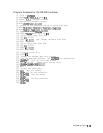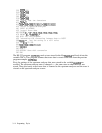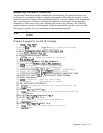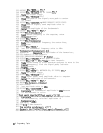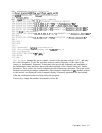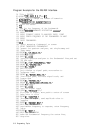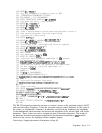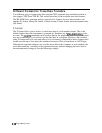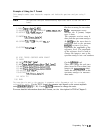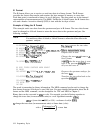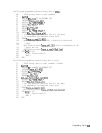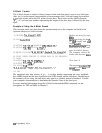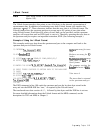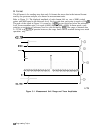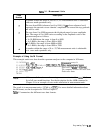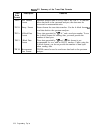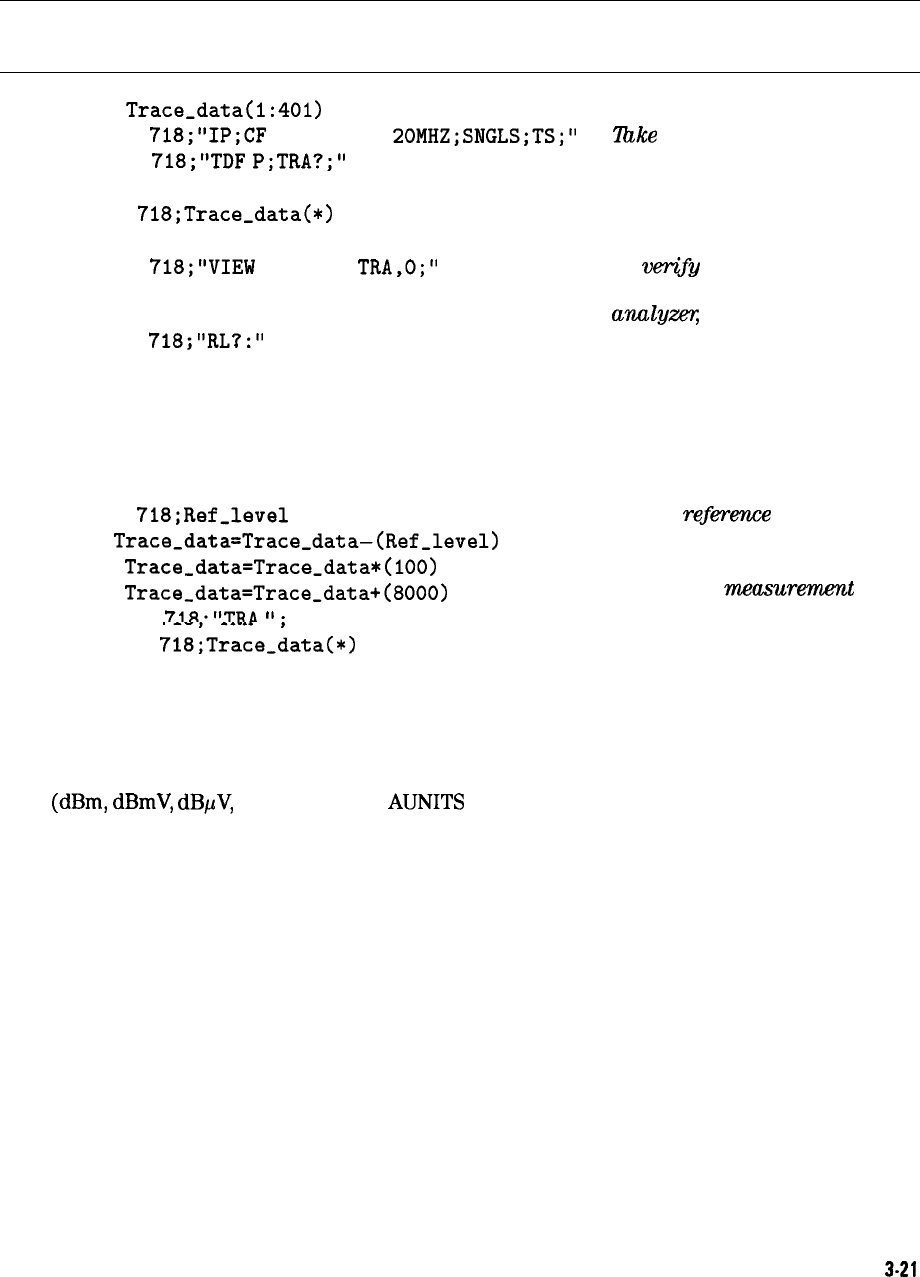
Example of Using the P Format
This example sends trace datatothe computer and backtothe spectrum analyzer using P
format.
Note
The spectrum analyzer mustbeinthelog amplitude scale to use the TDF P
format.
1 REAL
Trace_data(l:401)
Declare an array for trace data.
10 OUTPUT
718;"IP;CF
300MHZ;SP
20MHZ;SNGLS;TS;"
Zzke a measurement sweep.
20 OUTPUT
718;"TDF
P;TRA?;"
Activate the P format, output
trace A data.
30 ENTER
718;Trace_data(*)
The computer receives trace A
data from the spectrum analyzer
40 OUTPUT
718;"VIEW
TRA;MOV
TRA,O;"
50 OUTPUT
718*"RL'*"
'
*
,
60 DISP "PRESS CONTINUE WHEN READY"
70 PAUSE
80 ENTER 718;RefJevel
90 MAT
Trace-data=Trace-data-(Ref-level)
100 MAT
Trace,data=Trace-data*(lOO)
110 MAT
Trace,data=Trace_data+(8000)
120 OUTPUT
718m"TRA
I).
130 OUTPUT
718ITrace_data(*)
140 LOCAL 718
150 END
lb v&f@ that the trace data is
transferred back to the spectrum
analyzq
set trace A to zeros.
Determine the amplitude of the
reference level. The amplitude
of the reference level is used to
change the integers sent to the
spectrum analyzer into real numbers.
Get the refsrence level.
These lines change the real trace
data (stored in Trace-data) into
integers (in measurem.ent units).
Sends the trace data back to the
spectrum analyzer in measure-
ment units.
The trace data is sent to the computer in parameter units.
A
parameter unit is a standard
scientific unit.
For the TDF P format, the parameter unit depends on the current amplitude
units
(dBm,
dBmV,
dBpV,
V, W). Use the
AUNITS
command to change the units.
For more detailed information about the P format, see the description for TDF in Chapter 5.
Programming Topics
3-21



